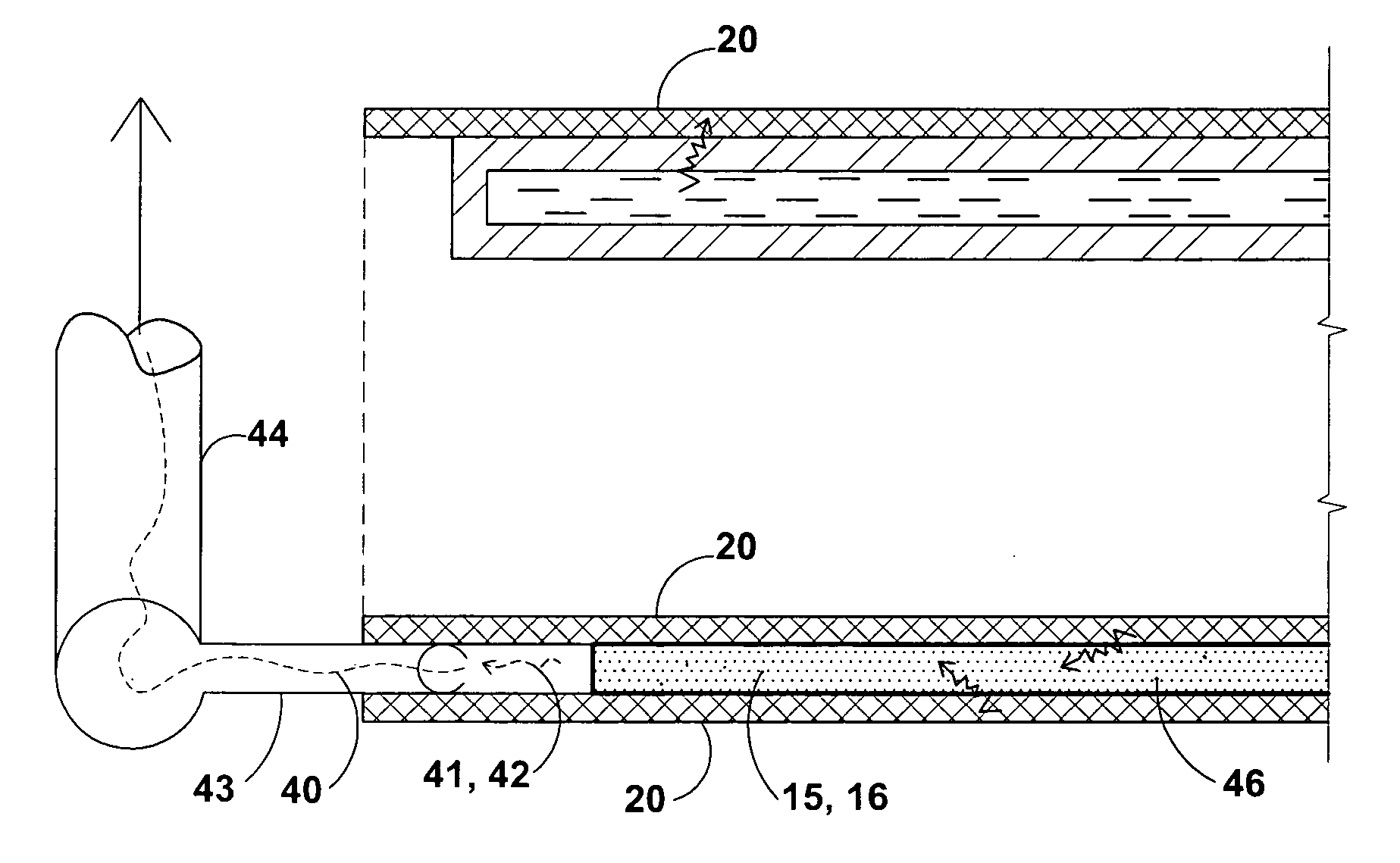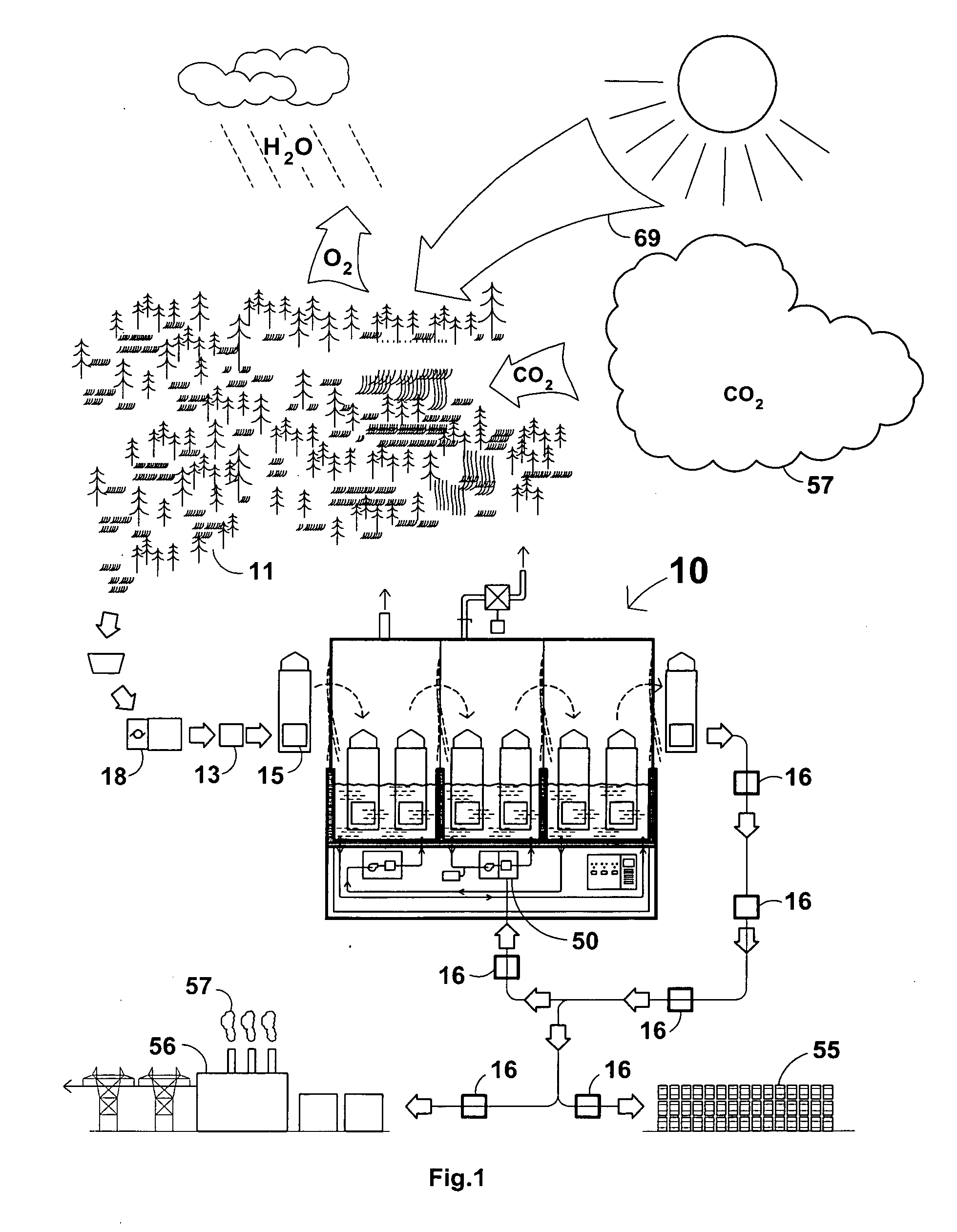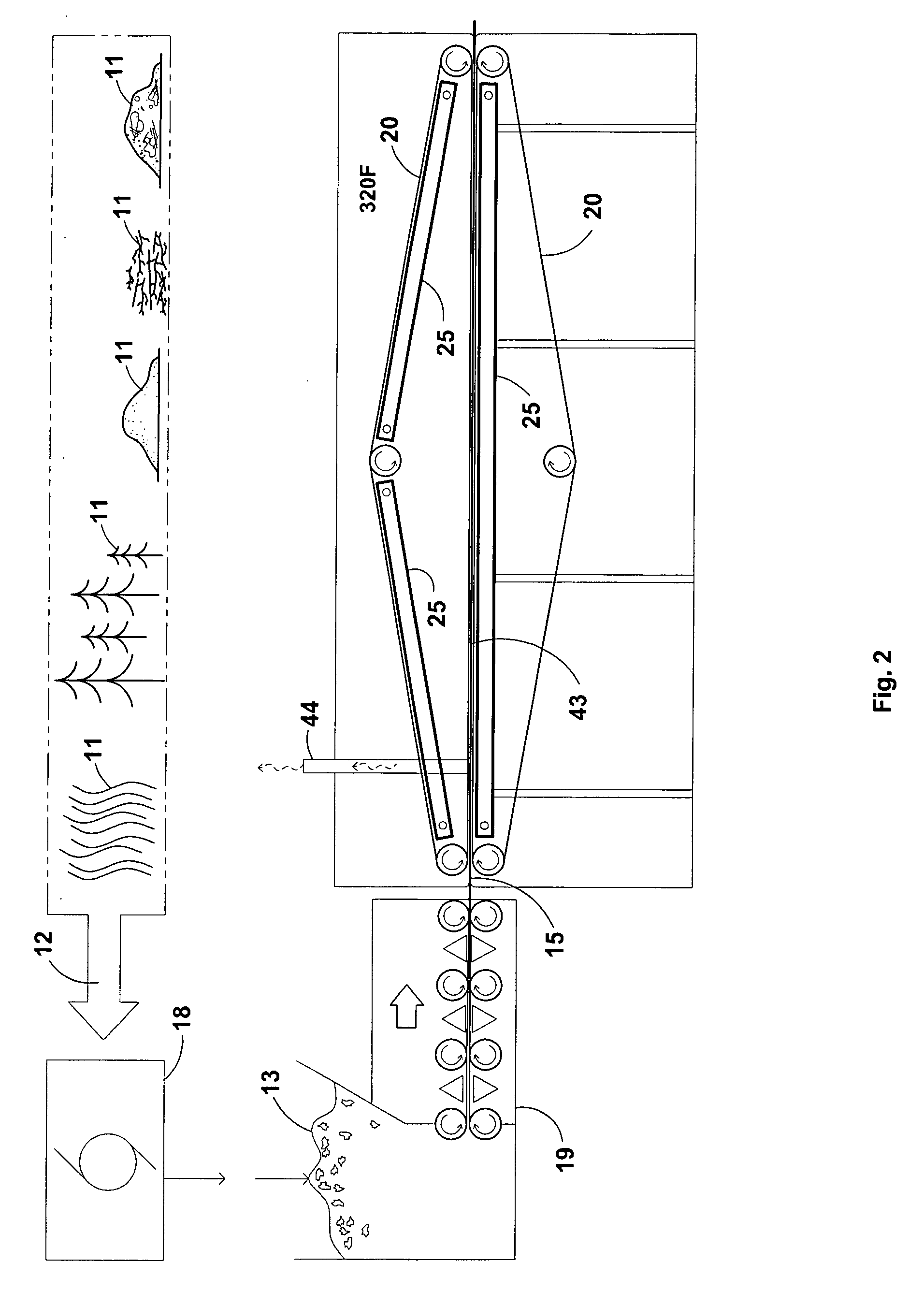Method and apparatus for biomass torrefaction using conduction heating
- Summary
- Abstract
- Description
- Claims
- Application Information
AI Technical Summary
Benefits of technology
Problems solved by technology
Method used
Image
Examples
Embodiment Construction
[0064]The overall apparatus and method will best be understood by the following more detailed description of the drawing.
[0065]Referring now to FIGS. 1 and 2 there is shown a diagrammatic view of the path wood 13 would travel from biomass to a mill operation where the wood is turned into a pulp for densification into a sheet such as composition wood. The pulp wood 13 is formed into sheet stock 15 from roller presses or hydraulic presses 18 using existing technology. The wood sheet then enters the conduction heat process in accordance with the present invention where the wood is converted to torrefied wood sheets (TWS) 16. The sheets 16 may be further cut into pellets (TWP). The fully processed torrefied wood pellets (TWP) are diagrammatically illustrated as being distributed to electric power plants 56; to the heater 50 for this process; and to storage facilities 55 to be used as energy and pollution “offsets”.
[0066]The schematic elevation view of one form of the direct conduction h...
PUM
 Login to View More
Login to View More Abstract
Description
Claims
Application Information
 Login to View More
Login to View More - R&D
- Intellectual Property
- Life Sciences
- Materials
- Tech Scout
- Unparalleled Data Quality
- Higher Quality Content
- 60% Fewer Hallucinations
Browse by: Latest US Patents, China's latest patents, Technical Efficacy Thesaurus, Application Domain, Technology Topic, Popular Technical Reports.
© 2025 PatSnap. All rights reserved.Legal|Privacy policy|Modern Slavery Act Transparency Statement|Sitemap|About US| Contact US: help@patsnap.com



